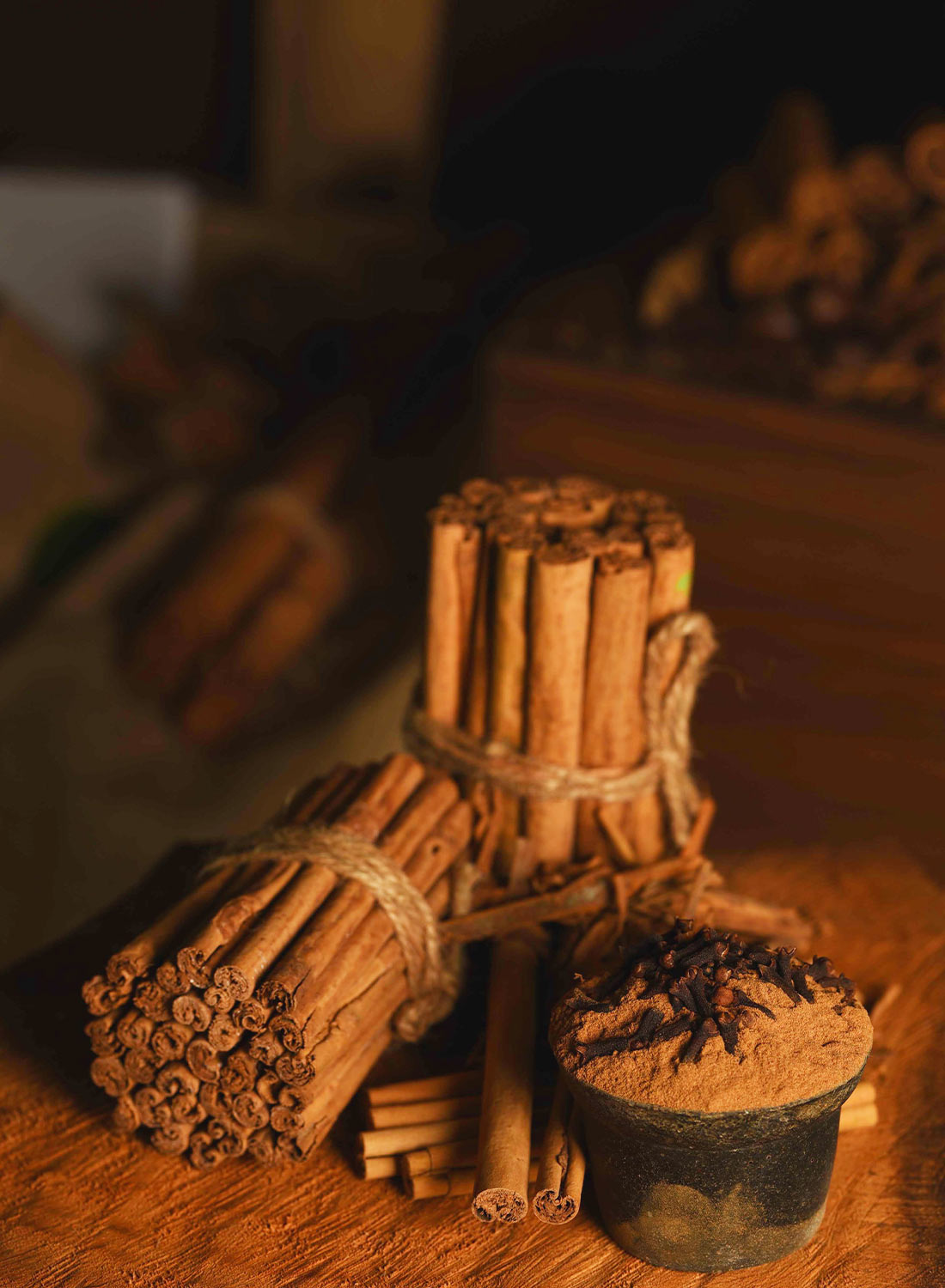ABOUT
CEYLON CINNAMON
Cinnamon was one of the first spices known to mankind since the early days of civilization. In the ancient times the most important spice export of Sri Lanka has been the Ceylon cinnamon.
Cinnamon (Cinnamomum zeylanicum) has many everyday uses. Every part of the tree, namely, bark, leaves, buds, flowers, fruits, wood, and roots are being used.
Cinnamon is a very useful spice of Sri Lanka. Cinnamon is#4907888 used for cooking purposes, medicinal purposes and also in the cosmetic and perfumery industries. In some counties cinnamon has been used for religious purposes. It is no wonder cinnamon is a miracle plant with all these possible uses having economic importance for its products.
The genus Cinnamonum
The genus Cinnamonum Schaeffer is a large genus having more than 250 species, distributed in south and south-east Asia, China and Australia. Cinnamon and Cassia are the two oldest known spices of the genusCinnamoum used by mankind and are the only commercially important ones. Cinnamon (Cinnamonum.zeylanicum Blume) is the “true cinnamon” of commerce. Other species- Cassia sometimes called "bastard cinnamon" is obtained from various sources like Chinese cassia (C.aromaticum, syn.Cassia) Indonesian cassia/Padang cassia or korintje ( C.burmanii), Saigon cassia or Vietnam cassia ( C.cassia or earlier identified as (C.loureirii) and Indian cassia ( C.tamala).

+
PARTNERS IN WORLD WIDE 

